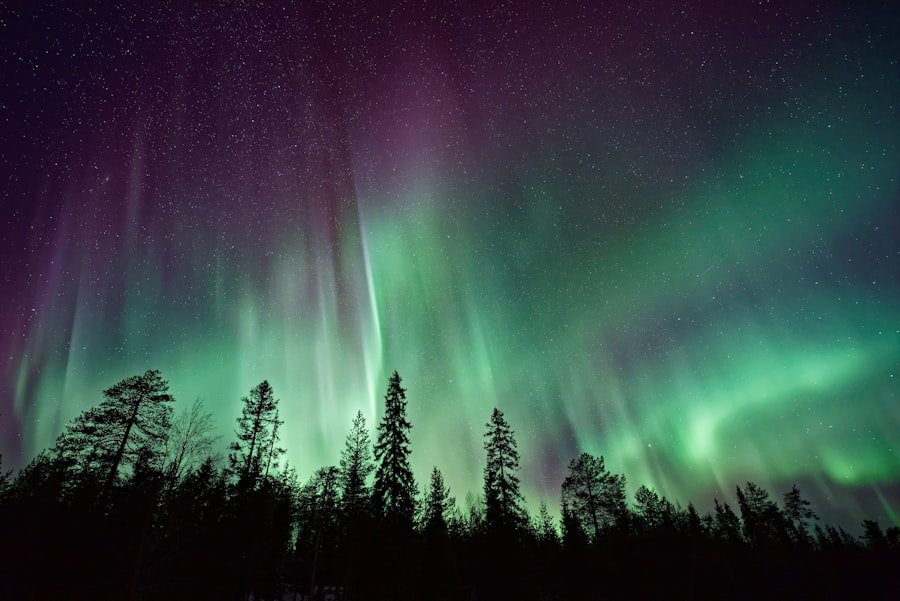This post may contain affiliate links. When you purchase through links on our site, we may earn an affiliate commission.
As the warm embrace of summer envelops the landscape, I find myself drawn to the great outdoors, where the night sky transforms into a breathtaking canvas of stars. Summer stargazing camping is not just a pastime; it’s an experience that connects me with nature and the cosmos. The long, balmy evenings provide the perfect backdrop for laying back on a blanket, gazing up at the twinkling stars, and contemplating the vastness of the universe.
The thrill of discovering constellations, planets, and even the occasional meteor shower fills me with a sense of wonder and adventure. Camping under the stars allows me to escape the hustle and bustle of daily life, immersing myself in the tranquility of nature. The crackling of the campfire, the rustle of leaves in the gentle breeze, and the distant sounds of nocturnal wildlife create an atmosphere that is both serene and exhilarating.
With each passing moment, I feel more connected to the universe, as if the stars are whispering secrets of ancient civilizations and distant galaxies. This article will guide you through the enchanting world of summer stargazing camping, offering insights into where to go, what to bring, and how to make the most of this magical experience.
Key Takeaways
- Summer is the perfect time for stargazing camping, with clear skies and warm weather creating ideal conditions for observing the night sky.
- Dark Sky Parks and Reserves offer some of the best stargazing experiences, with minimal light pollution and designated areas for astronomy enthusiasts.
- Look for campgrounds with open spaces and unobstructed views of the night sky for the best stargazing experience.
- Essential stargazing equipment includes a telescope, binoculars, star charts, and a red flashlight, while tips include allowing your eyes to adjust to the dark and being patient.
- Many family-friendly stargazing camping destinations offer astronomy events and programs, making it a fun and educational experience for all ages.
Dark Sky Parks and Reserves: Where to Find Them
One of the most crucial elements of a successful stargazing camping trip is choosing the right location. Dark Sky Parks and Reserves are designated areas that prioritize minimal light pollution, allowing for optimal stargazing conditions. These parks are often located in remote regions, far from urban development, making them ideal for those like me who seek to immerse themselves in the beauty of the night sky.
Some renowned Dark Sky Parks include Jasper National Park in Canada and Big Bend National Park in Texas, both of which offer stunning vistas and unparalleled stargazing opportunities. In my quest for celestial wonders, I’ve discovered that many countries have established their own Dark Sky Reserves. For instance, in the United Kingdom, Galloway Forest Park is celebrated for its dark skies and is a haven for astronomers and casual stargazers alike.
These parks often host events and programs that enhance my experience, providing guided tours and educational sessions about the stars and planets. By visiting these designated areas, I not only enjoy breathtaking views but also contribute to the preservation of our night skies for future generations.
Best Campgrounds for Stargazing

When it comes to finding the perfect campground for stargazing, I’ve learned that certain locations stand out due to their accessibility and amenities. Campgrounds situated within or near Dark Sky Parks are often my first choice, as they provide easy access to some of the best stargazing spots. For example, I’ve had incredible experiences at campgrounds like Pine Mountain State Resort Park in Kentucky, where I could set up my tent and step outside to be greeted by a dazzling display of stars.
Another fantastic option is Glacier National Park in Montana, where campgrounds like Apgar offer stunning views of the night sky over pristine wilderness. The combination of breathtaking landscapes and minimal light pollution creates an unforgettable stargazing experience. Additionally, many campgrounds provide facilities such as fire pits and picnic tables, making it easy for me to enjoy a meal under the stars before settling in for a night of celestial exploration.
Choosing a campground that caters to stargazers enhances my overall experience, allowing me to fully immerse myself in the beauty of the night sky.
Equipment and Tips for Stargazing Camping
| Equipment | Tips |
|---|---|
| Telescope | Choose a telescope with a large aperture for better viewing |
| Binoculars | Bring a pair of binoculars for a wider field of view |
| Star Chart | Use a star chart to identify constellations and stars |
| Red Flashlight | Use a red flashlight to preserve night vision |
| Folding Chair | Bring a comfortable folding chair for long stargazing sessions |
To make the most of my stargazing camping experience, I’ve learned that having the right equipment is essential. While I can certainly enjoy the night sky with just my eyes, bringing along a few tools can enhance my experience significantly. A good pair of binoculars or a telescope can reveal details that are otherwise invisible to the naked eye.
I’ve found that even a simple pair of binoculars can bring distant star clusters and planets into sharp focus, making my stargazing sessions even more rewarding. In addition to optical equipment, I always pack a star chart or a stargazing app on my smartphone. These resources help me identify constellations and celestial events as they unfold above me.
I also make sure to bring along a comfortable blanket or reclining chair for optimal viewing comfort. As I settle in for a night of stargazing, I find it helpful to allow my eyes to adjust to the darkness; this way, I can see more stars than I ever thought possible. Lastly, I always remember to dress warmly and bring snacks—there’s nothing quite like enjoying a warm drink while gazing at the cosmos.
Astronomy Events and Programs
One of the most enriching aspects of summer stargazing camping is participating in astronomy events and programs. Many national parks and observatories host special events during peak stargazing seasons, offering guided tours led by knowledgeable astronomers. These events provide me with an opportunity to learn about celestial phenomena while connecting with fellow stargazers who share my passion for the night sky.
I’ve attended several star parties where telescopes are set up for public use, allowing me to view planets like Jupiter and Saturn up close. These gatherings often include presentations on various astronomical topics, from understanding constellations to learning about upcoming meteor showers. Engaging with experts in the field deepens my appreciation for astronomy and enhances my overall experience under the stars.
Additionally, many parks offer family-friendly programs that introduce children to the wonders of space, making it a memorable experience for everyone involved.
Family-Friendly Stargazing Camping Destinations

Acadia National Park: A Coastal Stargazing Paradise
Acadia National Park in Maine offers a unique blend of stunning coastal views and clear night skies, making it an ideal destination for families. The park’s ranger-led programs engage children in learning about constellations and celestial navigation, fostering a love for astronomy and the great outdoors.
Shenandoah National Park: Astronomy Nights and Scenic Overlooks
Shenandoah National Park in Virginia features campgrounds with easy access to scenic overlooks perfect for stargazing. The park often hosts family-oriented astronomy nights, where kids can participate in hands-on activities related to space exploration. These experiences not only foster a love for nature but also create lasting memories as families gather around the campfire sharing stories about their favorite constellations.
Creating Lasting Memories Under the Stars
Stargazing camping experiences have the power to bring families closer together, creating lifelong memories as they explore the wonders of the universe. By choosing destinations that cater specifically to families, parents can ensure a fun and educational experience for their children, inspiring a love for nature and the stars that will last a lifetime.
Off-the-Grid Stargazing Camping Spots
For those seeking solitude and an escape from modern distractions, off-the-grid stargazing camping spots offer an unparalleled experience. These remote locations often require some effort to reach but reward me with breathtaking views of unpolluted night skies. One such hidden gem is Death Valley National Park in California, where I can camp far from city lights and witness some of the darkest skies in North America.
Another off-the-grid option is Big Sur along California’s central coast. Here, I can find secluded campsites nestled among towering redwoods while enjoying panoramic views of the Milky Way stretching across the horizon. The isolation allows me to fully immerse myself in nature while marveling at the beauty above me.
These off-the-beaten-path locations provide not only stunning stargazing opportunities but also a chance for introspection and connection with nature.
Combining Stargazing with Other Outdoor Activities
One of the joys of summer stargazing camping is that it can easily be combined with other outdoor activities. Hiking during the day allows me to explore beautiful landscapes while building anticipation for an evening under the stars. Many national parks offer trails that lead to scenic overlooks or high points where I can enjoy both daytime adventures and nighttime stargazing.
Additionally, I often incorporate activities like kayaking or canoeing into my camping trips. Paddling on calm waters during sunset provides a unique perspective as I watch colors dance across the sky before darkness falls. Once night descends, I can transition seamlessly from water activities to stargazing without missing a beat.
This combination enriches my overall experience, allowing me to appreciate both terrestrial beauty and celestial wonders during my summer adventures. In conclusion, summer stargazing camping is an extraordinary way to connect with nature while exploring the mysteries of the universe. From choosing dark sky parks to selecting family-friendly destinations or off-the-grid spots, there are countless opportunities for adventure under the stars.
By equipping myself with knowledge and tools for stargazing, participating in astronomy events, and combining outdoor activities with my celestial explorations, I create unforgettable memories that will last a lifetime. As I look up at the night sky filled with stars, I am reminded of my place in this vast universe—a humbling yet exhilarating thought that keeps me coming back for more summer adventures beneath the stars.
If you’re planning a summer stargazing camping trip, you’ll want to make sure you have all the essential decorations and supplies to create a cozy and inviting atmosphere. Check out this article on holiday party supplies must-have decorations essentials for some great ideas on how to set the mood for your outdoor adventure. Creating a warm and welcoming space will enhance your stargazing experience and make your camping trip even more memorable.
FAQs
What are some popular summer stargazing camping destinations?
Some popular summer stargazing camping destinations include Joshua Tree National Park in California, Cherry Springs State Park in Pennsylvania, Big Bend National Park in Texas, and Acadia National Park in Maine.
What makes these destinations ideal for stargazing?
These destinations are ideal for stargazing due to their remote locations, minimal light pollution, and clear night skies. They offer unobstructed views of the stars and celestial bodies.
What should I bring for stargazing while camping?
When stargazing while camping, it’s important to bring a telescope or binoculars, a star chart or stargazing app, a comfortable blanket or chair, and warm clothing as temperatures can drop at night.
Are there any specific rules or regulations for stargazing at these camping destinations?
Some camping destinations may have specific rules or regulations for stargazing, such as designated stargazing areas, restrictions on the use of artificial light, and guidelines for minimizing light pollution. It’s important to check the rules for each specific destination.
What are some of the celestial events that can be observed during summer stargazing?
During summer stargazing, you may be able to observe celestial events such as meteor showers, the Milky Way, planets like Jupiter and Saturn, and constellations like Scorpius and Sagittarius. These events can vary depending on the time and location.

 using WordPress and
using WordPress and 
No responses yet